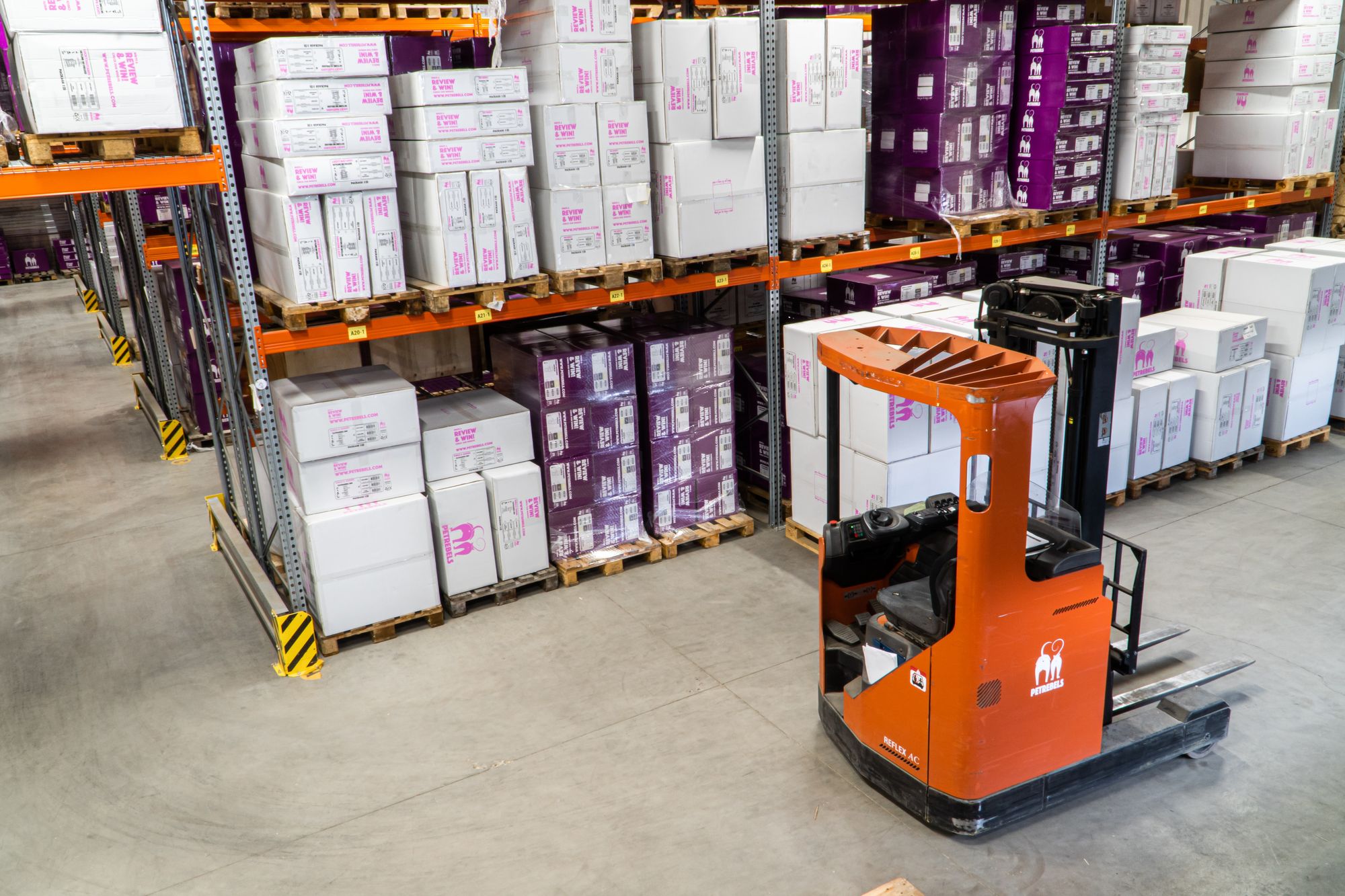

When it comes to shipping goods to international clients, there are standard document requirements used for exporting.
One of the most important ones you’ll need to learn how to issue is a commercial invoice.
Unlike a regular sales invoice, a commercial invoice includes the necessary extra details for crossing the border, such as country of origin, harmonized system (HS) code, freights terms, and so on.
In this guide, we will explain what a commercial invoice is, along with how to issue it and pack it for shipment.
Read on to learn about:
A commercial invoice is a document that serves as a request for payment, for goods sold internationally.
This special export document is required by customs, the authority responsible for controlling imports. They need the commercial invoice to quickly decide what taxes, tariffs, or duties apply to the package and prevent any hold-ups.
Usually, before issuing a commercial invoice and delivering the goods, businesses may also send out a proforma invoice, as a negotiating medium between the seller and the buyer.
The proforma invoice provides the buyer with a close estimate of how much the final invoice will cost, and when the delivery will occur so that they know what to expect.
It doesn’t serve as a request for payment, though, it only gives the customer an idea about how much they’ll have to pay in the future.
Want to learn more about the common types of invoices used in business? Check out our guide on invoice types for small business accounting.
No, a commercial invoice isn’t required everywhere.
The document is only necessary for shipments across international borders.
That means packages being delivered within two states that are part of the US federal government, for example, from California to Florida, do not require a commercial invoice.
The same rule applies to all countries that are part of the European Union (EU), since they are also under the same legislation, so movement of goods and services is free of customs regulations.
As for any other type of international shipments, from the US to Canada, the US to the EU, the US to Asia, and so on, you always need to attach a commercial invoice.
While there isn’t a standard format you have to follow to create a commercial invoice, the document must still cover several details in order to be considered legally binding.
Whether you decide to fill in a premade commercial invoice template or create one from scratch, make sure the document includes the following elements:
The very first part of every invoice is the header that includes the contact information, for both the buyer (importer) and the seller (exporter).
The seller’s contact information details include:
Then below, or next to the seller’s info, we have the buyer’s details:
Every invoice is tracked by a unique invoice number (invoice ID), to avoid duplicate payments and keep documents well-organized. How this invoice number gets generated is up to you, however, the most common method business use is sequential.
The sequential approach, as the name suggests, means moving up by one for every new invoice. For instance, if your very first invoice is 00001, then your next would be 00002, and so on.
To learn more about the different ways you can create invoice numbers, check out our complete guide on issuing invoice numbers.
Next, you need to specify the payment due date, which might have been previously agreed upon with the client or stated in the proforma invoice.
If that’s not the case, just go with the standard billing practice of your business.
Don’t want to manually number every single invoice? Invoicing software can help you by automatically generating your invoice numbers, with every new sale that is made.
One of the most valuable pieces of information on a commercial invoice is the itemized list of products that you’re shipping.
This information gives the customs department a run-through of all of the contents of the package, along with their prices.
Make sure to always include:
Make sure to be precise when filling in this information, because any inaccuracies could get you fined.
Every product you ship needs to include a Harmonized System (HS) code.
The HS code categorizes merchandise based on its type, purpose, and nature. This way, custom authorities can easily decide which taxes, tariffs, and other additional excise duties apply to every product line.
Now, the World Customs Organization updates these codes every 5 years, so looking up the code may result in an inconclusive answer. If that happens, the manufacturer of the product should know the code. Or you could contact your country’s tax agency for the information.
Another additional detail you have to provide is the country of origin of your products. The country of origin is basically the place your goods were produced in.
There are cases when you’ll need to attach an additional Certificate of Origin, that customs use to decide whether your goods are eligible for import, and/or subject to any extra duties.
The terms of sale, also known as the Incoterms, are internationally recognized rules that facilitate trade. These terms help buyers and sellers clearly communicate their contract terms, so there aren’t any misinterpretations regarding transportation management.
More specifically, Incoterms clarify:
For more information on Incoterms, head over to the ICC official website.
After choosing the best Incoterms for both you and your client, the next step is deciding on the payment terms.
Payment terms let the buyer know how much time they have to make their invoice payment, as well as what payment methods they can use. The most commonly used payment term in business is net-30, which means payment is due in 30 days, from the date when the commercial invoice was issued.
As for payment methods, it’s best to offer your clients as many options as possible, such as:
For quick access, we’ve made a list of all of the necessary shipping and customs terms you need to know in order to issue a commercial invoice:
After downloading the finished commercial invoice, you need to print out three copies:
Put two of these printed invoices in a packing list envelope, to keep them safe and locked. Then, put the last one inside the package for the buyer to see.
If you want to learn more about sending invoices and getting paid back on time, head over to our guide on how to send an invoice.
With cloud accounting software like Deskera, you can create commercial invoices and any other type of invoice, within seconds.
The program offers over 100+ free premade templates, that you can customize to your business brand, with the preferred color scheme, and logo in just a few clicks.

After tailoring the invoice to your business, just fill in the sidebar with the appropriate invoice elements. Then, press Share, to download, export, print, or email the document to customers, in whatever format you prefer: PDF, DOC, or XLS.

Deskera doesn’t hold your business back from going international, either!
The software comes with comprehensive multi-currency support for over 100 countries, so you don’t have to worry about calculating exchange rates for your commercial invoices.

The best part? You can access the software anytime, anywhere, on your mobile, tablet, or desktop simply by downloading the Deskera mobile app.
Start invoicing with Deskera right now, with our completely free trial. No credit details required.
An invoice is a bill issued by a business after the delivery of a product or service, to detail the sale and to request payment.
A commercial invoice, on the other hand, is a type of invoice used for international deliveries. It includes extra shipment elements such as country of origin, shipment date, the weight of the product, and more.
Both the packing list and commercial invoice have a matching detailed description of the products being shipped and their quantities.
A commercial invoice, however, is issued to let the buyer know how much they have to pay and when the payment is due. While a packing list’s purpose is to describe what the package contains so that the buyer can verify that the correct items have been received.
A common confusion people have is between the CN22/CN33 forms and the commercial invoice.
Now, both the CN22/CN33 forms and the commercial invoice provide the customs authorities with a list of the goods that are being exported.
The CN22 and CN23 forms, however, are additional documents only used in cases where the shipment is sent from an EU country, with postal services such as the Royal Mail or PostNL, to a country outside of the EU.
Royal Mail is a postal service used by the United Kingdom, while PostNL provides postal delivery services for the Netherlands, Germany, Italy, Belgium, and the United Kingdom.
This means that CN22/CN33 forms are only necessary when shipping from the above-mentioned countries part of the EU with Royal Mail and PostNL, to another country outside of the EU. Any other scenario, whether it is a shipment within the US, from the US to the EU, or from the US to Asia, doesn’t require a CN22/CN23 form.
As for a commercial invoice, it’s always required for all types of international deliveries.
In cases where you’re unsure whether or not a CN22/CN23 document is needed, consider including both these forms and the commercial invoice, to avoid any delays.
No, a tax invoice and a commercial invoice are not the same things. They both let the client know how much they need to pay, but they’re used for different intentions.
A commercial invoice serves as a standard payment demand for goods sold internationally.
A tax invoice, on the other hand, is used for an additional purpose: to help sellers, clients, and tax authorities process taxes for sales. It includes extra details regarding the GST (Goods and Services Tax), which a commercial invoice doesn’t.
The ICC (International Chamber of Commerce) recommends using the updated Incoterms of 2020.
With that being said, any Incoterms (even the ones older than 2010) are valid as long as both the buyer and the seller agree upon them. Make sure to specify on the commercial invoice, which chosen version of Incoterms is being used.
And that’s a wrap! We hope our guide to commercial invoices was helpful and answered all your questions.
For a quick recap, here are some of the main points we’ve covered:
![]()
![]()
![]()










While businesses located in the US are imposed a retail sales tax, many other countries across the world are subject…
10 min read Feb 28, 2021
People often confuse a purchase order with an invoice [https://www.deskera.com/blog/what-is-an-invoice/] and use the terms interchangeably.…
6 min read Feb 20, 2021![Difference Between an Invoice vs a Receipt [with Examples]](https://www.deskera.com/blog/content/images/2021/01/invoice-vs-receipt.jpg)
While both an invoice [http://deskera.com/blog/what-is-an-invoice/] and a receipt are commercial documents, invoices are issued to request…
8 min read Jan 31, 2021Hey 👋! Discover the best! Now!
Get Accounting, CRM & Payroll in one integrated package with Deskera All-in-One.
Hey 👋! Discover the best! Now!
Get Accounting, CRM & Payroll in one integrated package with Deskera All-in-One.